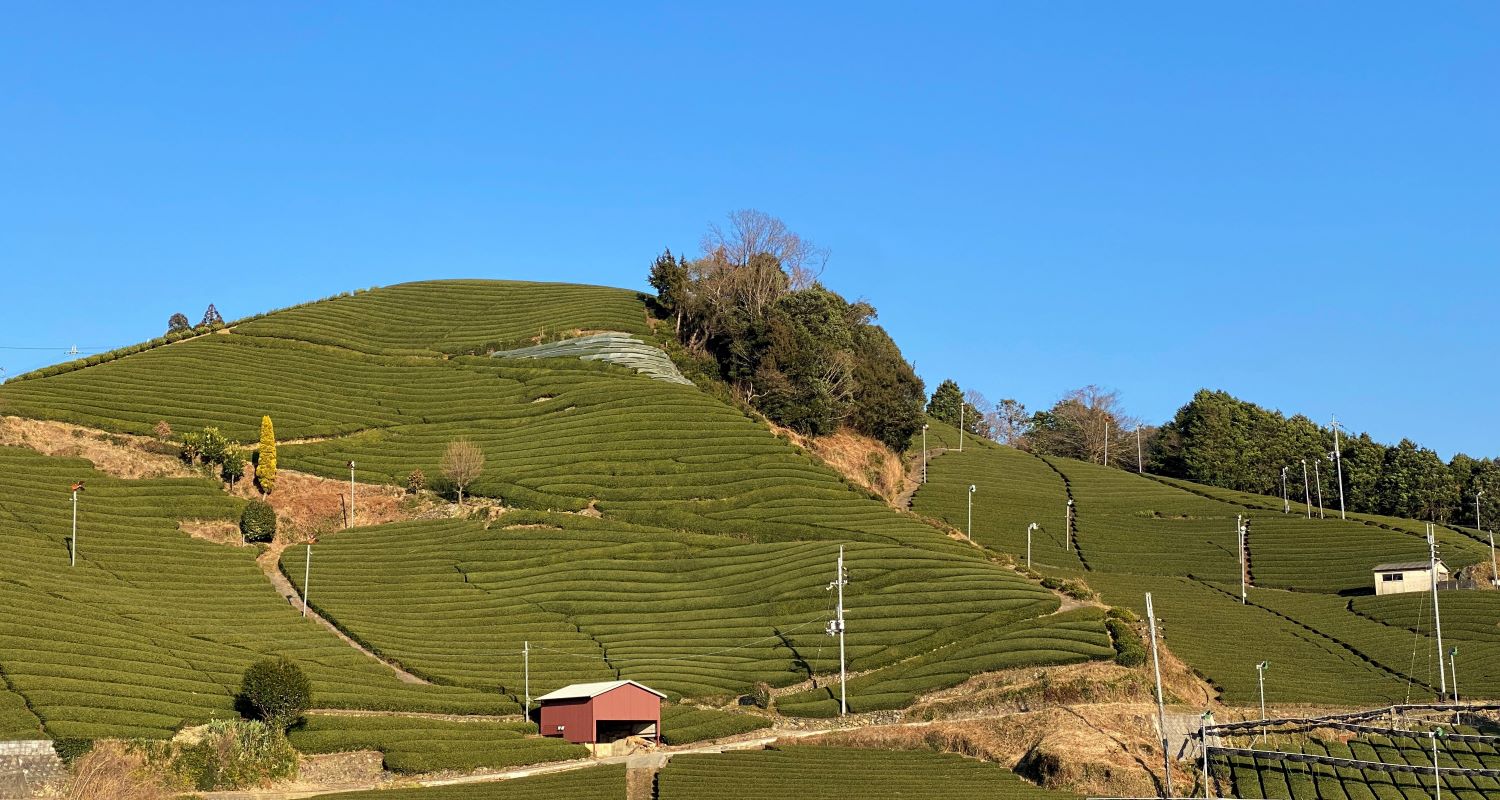There is no doubt that Kyoto is a famous tea production area. Home to many famous tea merchants, Kyoto has superior tea and snacks with tea ingredients. However, if you are an expert of Kyoto, you will go further. How about a short trip to experience its tea culture? Your heart will be cured while tasting the condensed and mellow tea in the thick green tea fields. Now, let’s explore Kyoto as home of tea bred by rich nature.
Endless Mountains and Tea Fields
Wazuka, the Birthplace of Tea
It must be many people’s common wish to see tea fields with their own eyes. Well, such a wish can be realized by going to Wazuka, but in a way that exceeds your imagination.
After an hour’s drive from Kyoto City, you will come Wazuka Town. It has been planting tea for 800 years since reclamation. Driving a fleeting car in Wazuka, you just cannot help cheering while passing along one tea field after another. Overlooking the scenery from the window, you will be as fascinated as a child. You are amazed at the omnipresent green, as tea fields cover everywhere, on a little open space, on the towering ridge or on the opposite hillside.
Tea is an evergreen tree. The tea fields are decorated with thick green all year round. From late April to July, in order to avoid direct sunlight, the tea trees are sometimes covered with waterproof cloth. However, we can see thick green tea fields in summer, autumn, and winter.
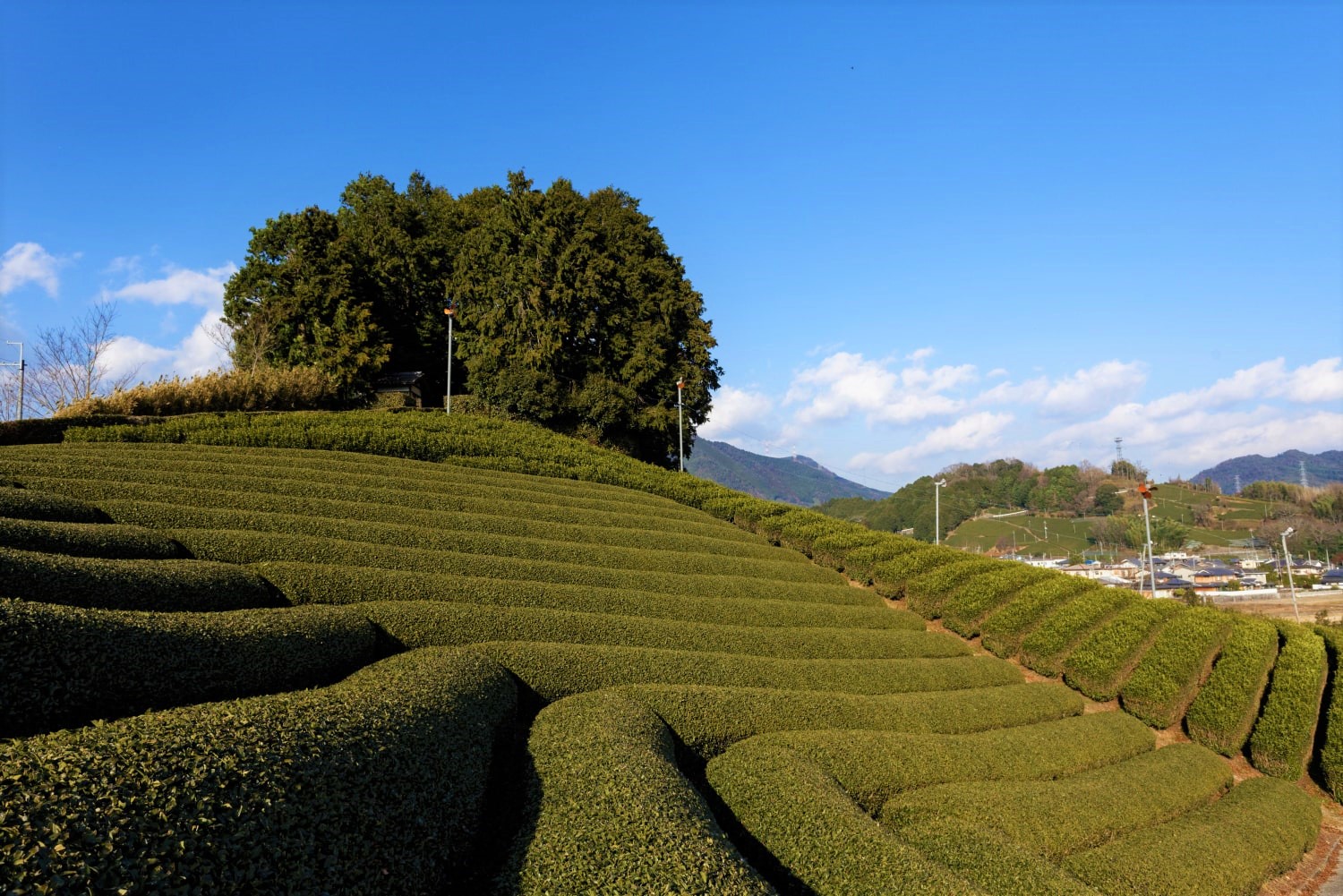

In the center of this slightly higher hill, also known as Taikosan mountain, rests the Imperial Mausoleum of Prince Asaka, son of Emperor Shōmu. It is surrounded by tea fields. Please pay attention not to step into the tea fields as you visit. Not far from the road, there is the tea shop named “Wazuka Tea Cafe”, which is a lively place.
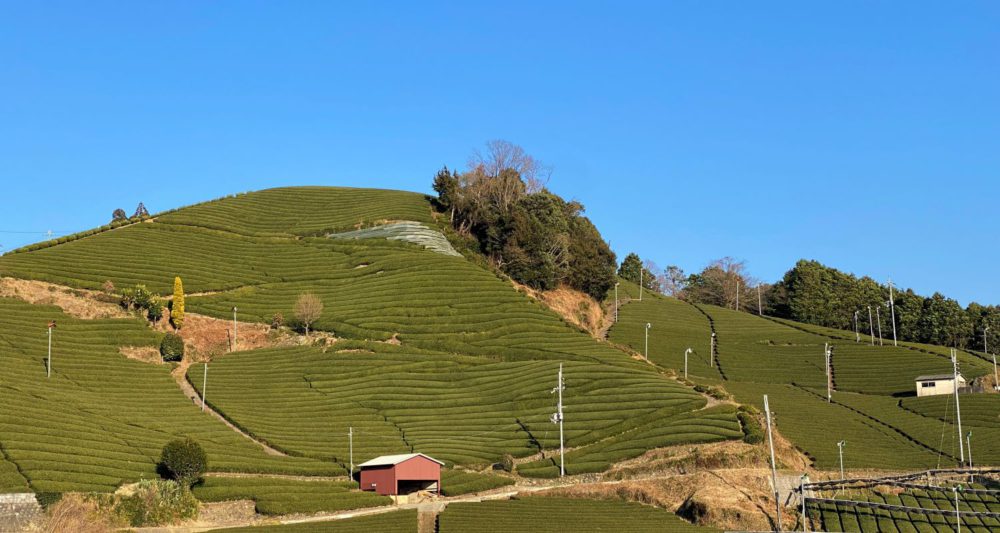

These tea fields are photogenic masterpieces. It is “Tea Plantations in Ishitera” that comes into view at any time. It was elected as No. 1 of Kyoto Prefecture Landscape Assets. In addition, there are “Tea Plantations in Kamatsuka” not far from the Imperial Mausoleum of Prince Asaka, and “Tea Plantations in Shirasu & Erihara” located in the steep and inclined mountains. It is a delight to visit them one by one.
The Man that Transformed the History of Tea Production
Visit the Former Residence of Nagatani Soen
In the Nara Period (710-794), tea spread from China to Japan. For a long time, people who liked drinking tea had been limited to eminent monks, nobles, and warriors. It was not until the Edo Period (1600-1868) that common people began to drink tea in their daily life. Yet it was just a simple brewing method, drinking the red and black tea. By no means, it could be counted as top-grade, either visually or tastefully.
It was Nagatani Soen that transformed all this. If you visit his former residence, you can see the appliance called “HOIRO”(baking oven)invented by him. In the 3rd year of Genbun (1738), in order to retain the beautiful green and refreshing aroma of tea, he invented “Aosei Sencha Seiho” (Uji tea making method), which carried out the hand rolling and drying procedure in the baking oven. This can be considered as a major turning point in the development of Japanese tea.
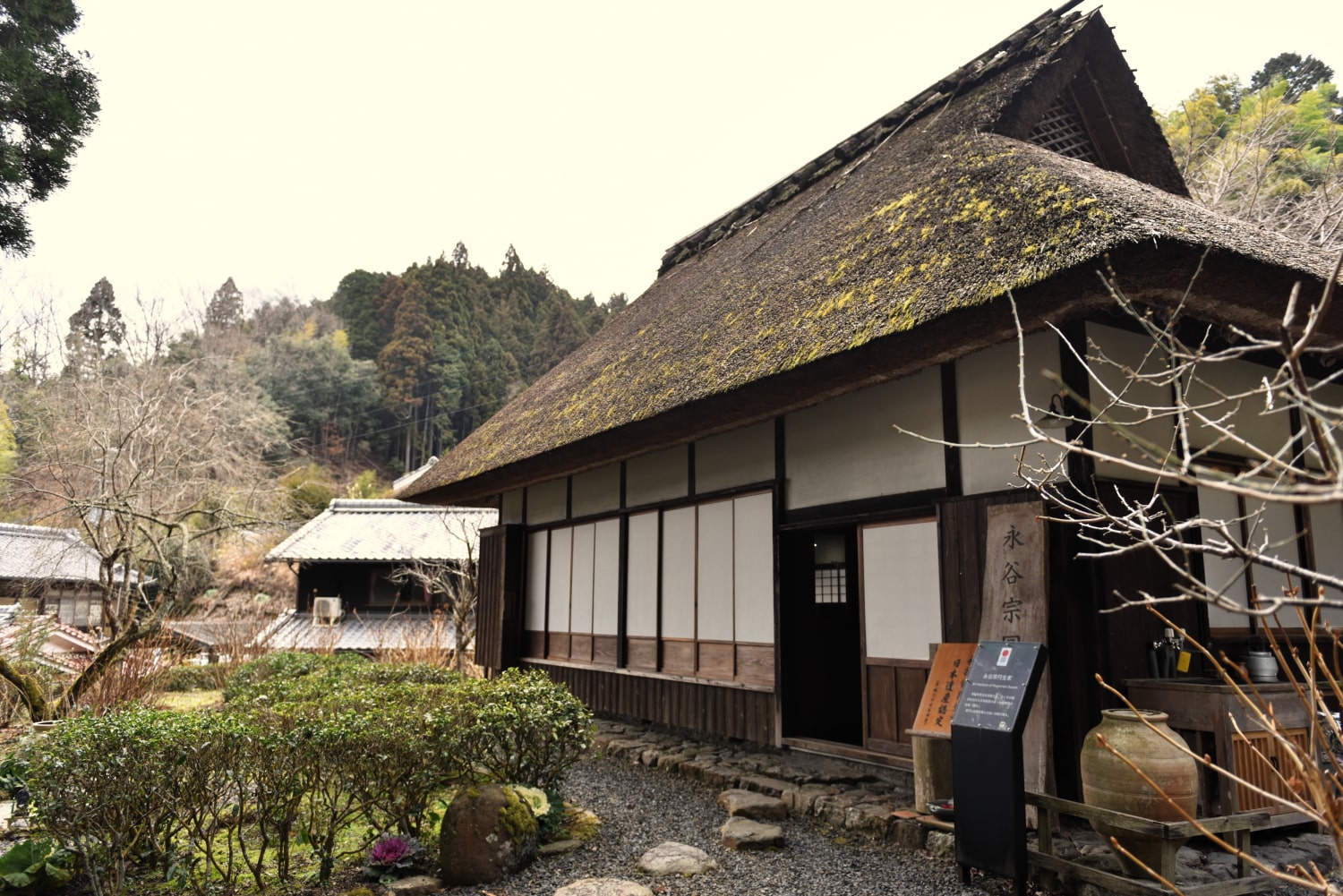

In the restored former residence, there preserved the tea making tools and the traces left by baking oven at that time.
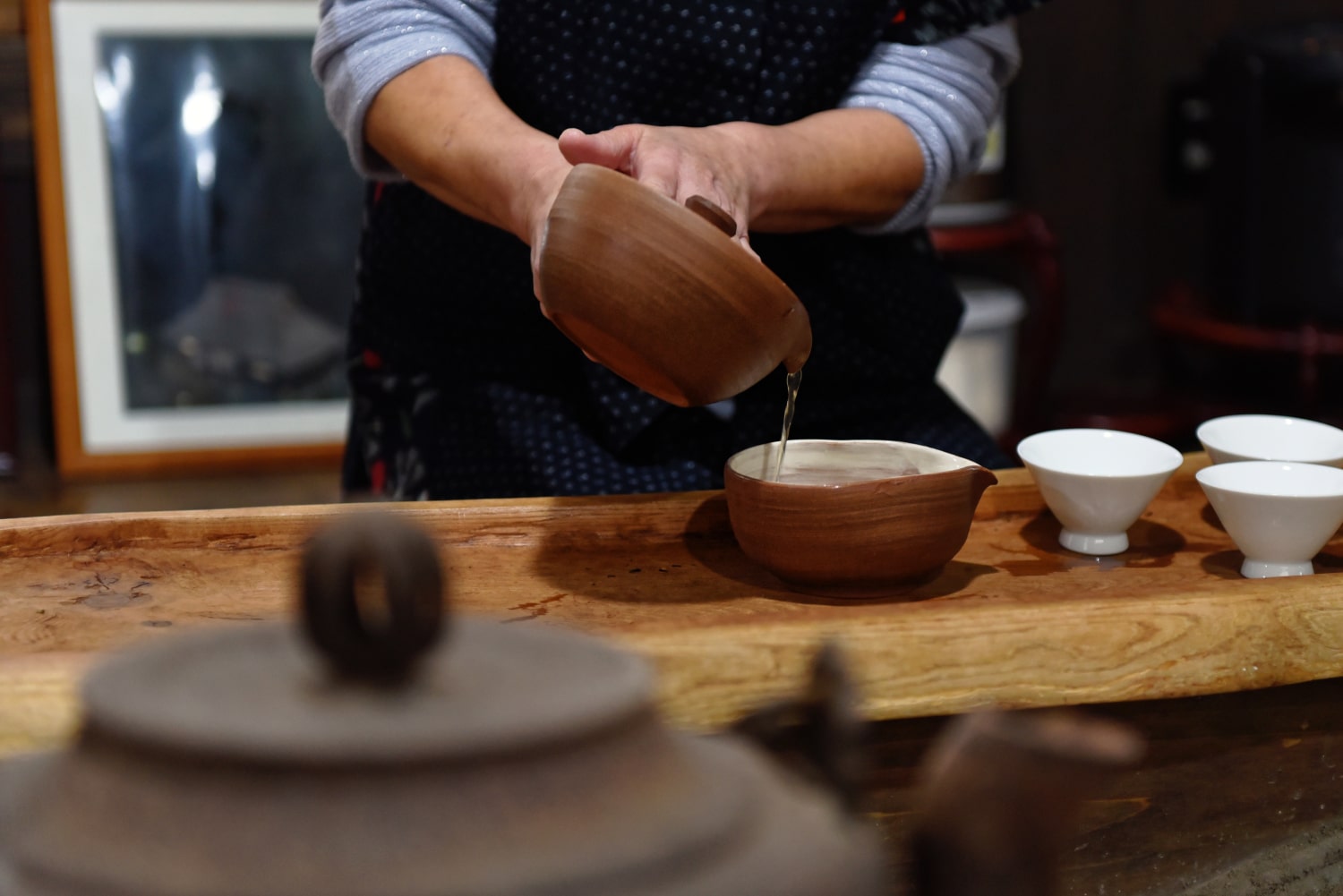

Former Residence of Nagatani Soen
Koaza Sorabiro, Oaza Yuyadani, Ujitawara-cho, Tsuzuki-gun, Kyoto Prefecture
Business Hours: 10:00 ~ 16:00 (only open on Saturdays, Sundays, and holidays)
Maintenance and management Sponsorship: 100 yen
※ Since there is no parking lot here, it is necessary to use the parking lot of Souen Koyuan Yantan. The walking distance is about 14 minutes.
Enjoy Superior Tea
Experience the Featured Tea Farmer’s Inn
There is a “Tea Farmer’s Inn Enu to enu” managed by the Kita family from generation to generation in Wazuka Town. This is an inn refitted from its old residence house and opened in 2017. It is said that the tea farmers who run this inn still plant 24 kinds of tea trees. The old house will make people nostalgic, just like visiting relatives in the countryside, giving people a sense of tranquility.
Ms. Noriko,the young proprietress, is responsible for preparing the meals. She adds homegrown tea to most of her dishes; such as adding tea-steamed tea tree flower to kombu plum and letting them sit overnight, adding tea leaves and persimmon cake to homemade sardines, and making tempura from ground tea and clover. Every ingredient is perfectly matched with tea and you simply cannot stop eating.
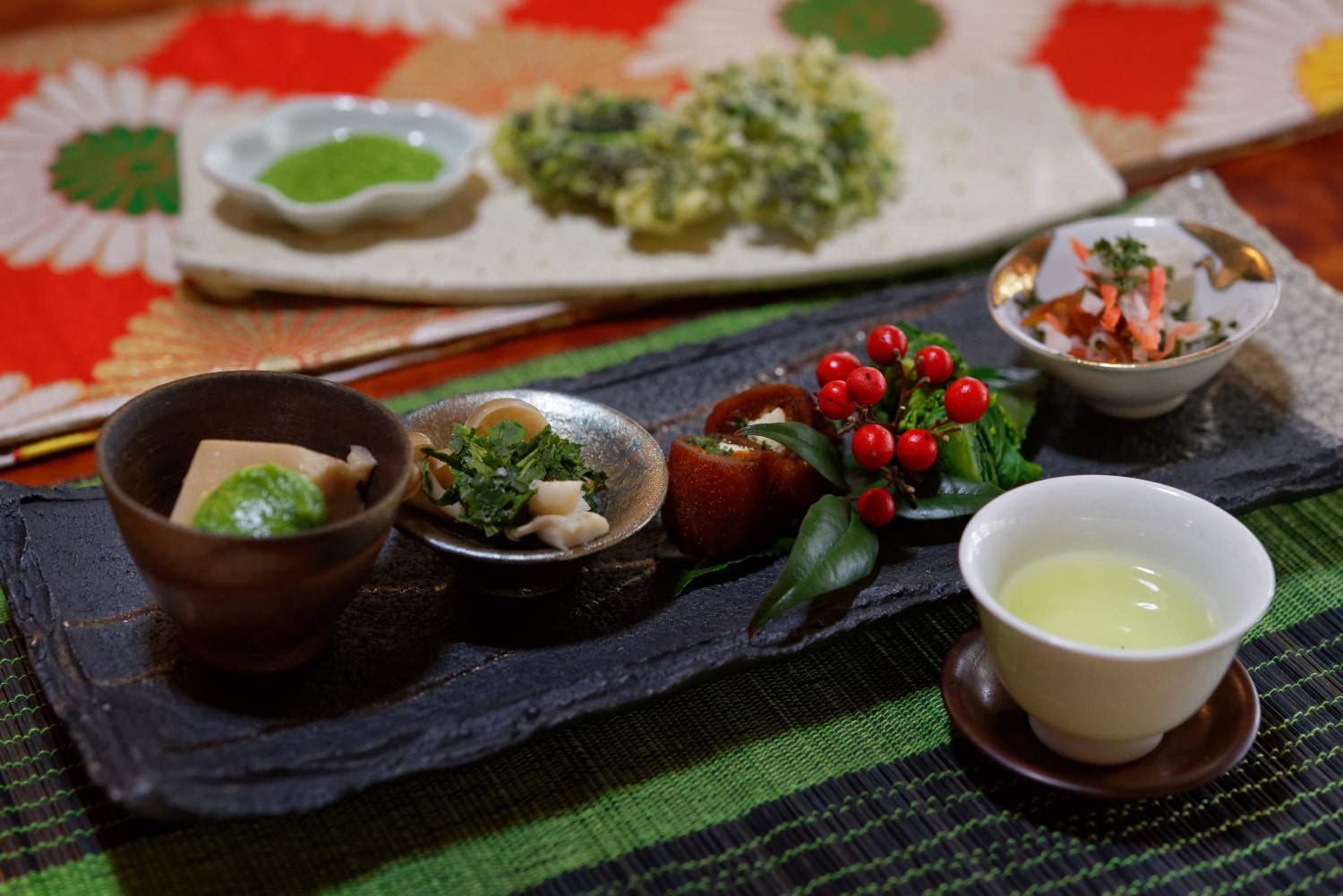

All kinds of appetizers have perfectly matched tea ingredients. They are all delicacies.
We experienced “Tea Kabuki” after dinner. “Tea Kabuki” is a game based on guessing tea, also known as “tea battle” since the Heian Period (794–1185). You first listen and try to remember the aromas of several kinds of tea. Then you carry out the process of making tea. After drinking tea, you compete by guessing the name of the tea right. This is an elegant game because you guess while slowly reviewing the taste, aroma, and color of tea (also known as soup color).
Only after “Tea Kabuki”, you realize that your tea brewing water was too hot before. For the same pot of tea, the first brewing needs water about 70 degrees centigrade only. The aroma and taste are quite different from those you had before. The second brewing needs water about 90 degrees centigrade, which makes a better taste than the first one.
Picking tea and walking in the tea fields are unique activities only to be found in Tea Farmer’s Inn. What interesting and charming experience. We can enjoy tea and learn everything about tea here.
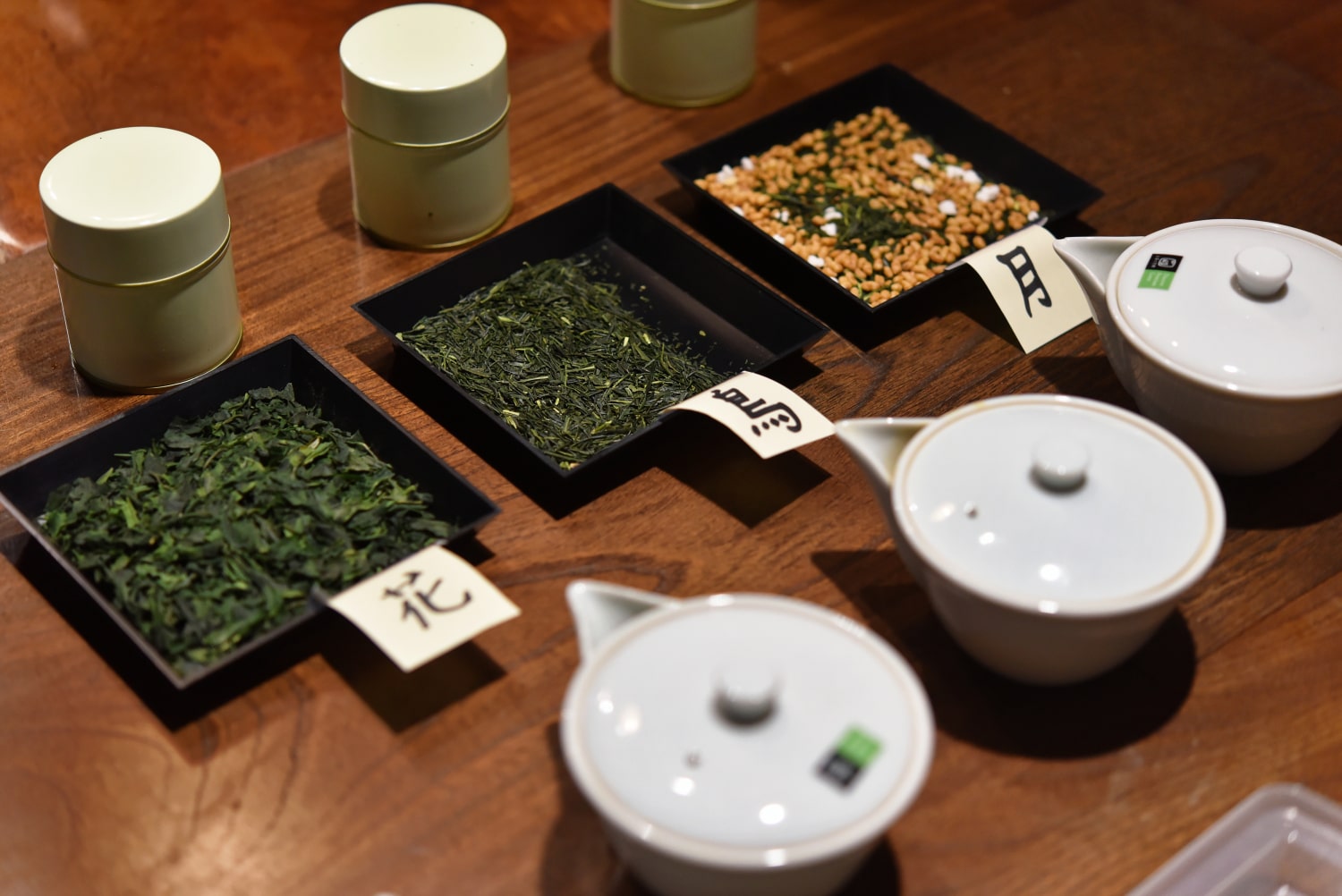

There are many kinds of tea, respectively named as flower, bird, moon, and so on.
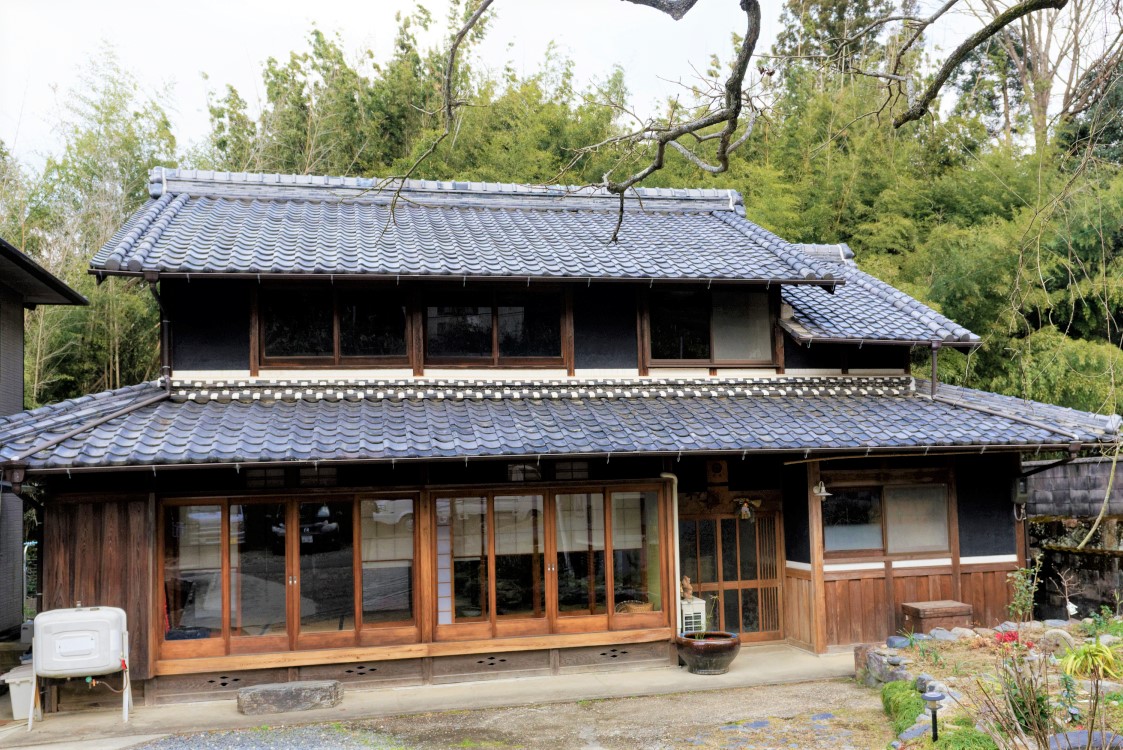

An old residence house exquisitely refitted as inn with tea fields nearby.
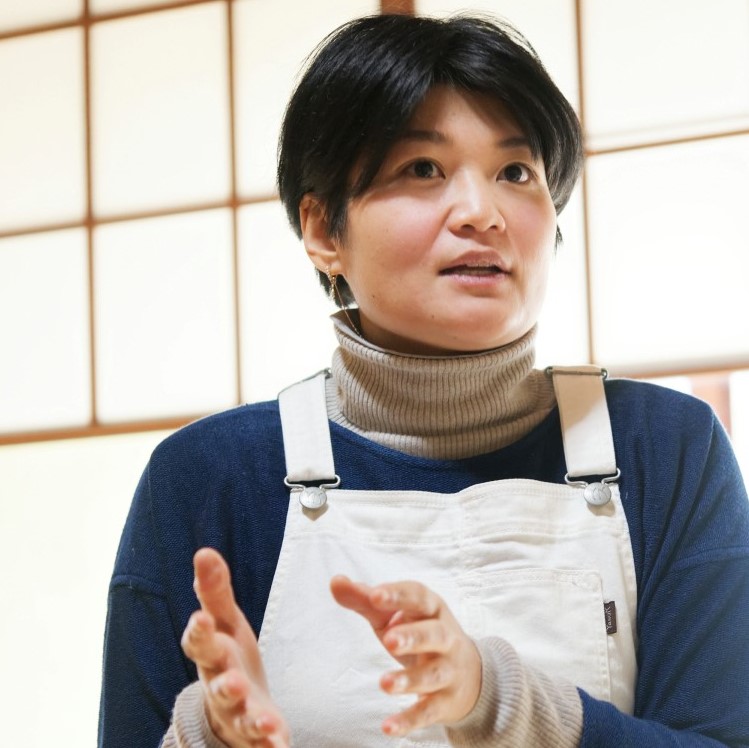

Ms. Noriko,the young proprietress, makes dishes with enticing color, aroma, and taste.
Tea Farmer’s Inn Enu to enu
30 Nakagani, Wazuka-cho, Soraku-gun, Kyoto Prefecture
080-3867-8884
When the phone is difficult to connect, please send e-mail for consultation.
enutoenu@gmail.com
13800 yen for dinner, breakfast and one night’s stay
9900 yen for one night stay and breakfast (All the above prices are tax inclusive.)
※ Activities like tea picking, tea Kabuki and so on need to be paid separately.
※ 3850 yen for set lunch and 5500 yen for set dinner. You can also order as you wish. Booking is required. (Prices are tax inclusive.)
Fresh and Pure Delicacy
Enjoy Ujicha at Horiishichimeien
Leaving Wazuka, we headed for Uji, a place with many famous tea merchants. Our destination was Horiishichimeien. This is one of the seven tea gardens designated by Ashikaga Yoshimitsu in the Muromachi Period (1336-1573). It is an old shop still looking after the ancient tea garden of “Okunoyama”. Among the seven legendary tea gardens, the only one that still exists is “Okunoyama”. Since its establishment, Horiishichimeien has maintained the same traditional cultivation technology as that of the past.
Nowadays, many tea trees are trimmed round-shaped as most of them are cut by machines. However, in “Okunoyama”, everything is still the same as before. Picking tea is by hand, so the tea tree can always grow upward. Despite great changes in the surrounding residential blocks, “Okunoyama” remains unchanged even after 650 years.
We drank tencha “Narino” bred by the six-generation owner of Horii Shichimeien, Mr. Chotaro Horii. “Narino” is a non-mixed tea. After sipping the clear and light-colored tea into your mouth, it spreads its strong aroma into your nostrils and then permeates through your entire body. When the tea slides into the root of your tongue, it feels like the wind in May, warm and gentle.
“Honesty is the character of Ujicha. We attach great importance to smooth taste and balanced aroma,” said Mr. Horii. Honesty, generosity, and elegance. I was deeply attracted by the outstanding freshness and refinement of Ujicha.
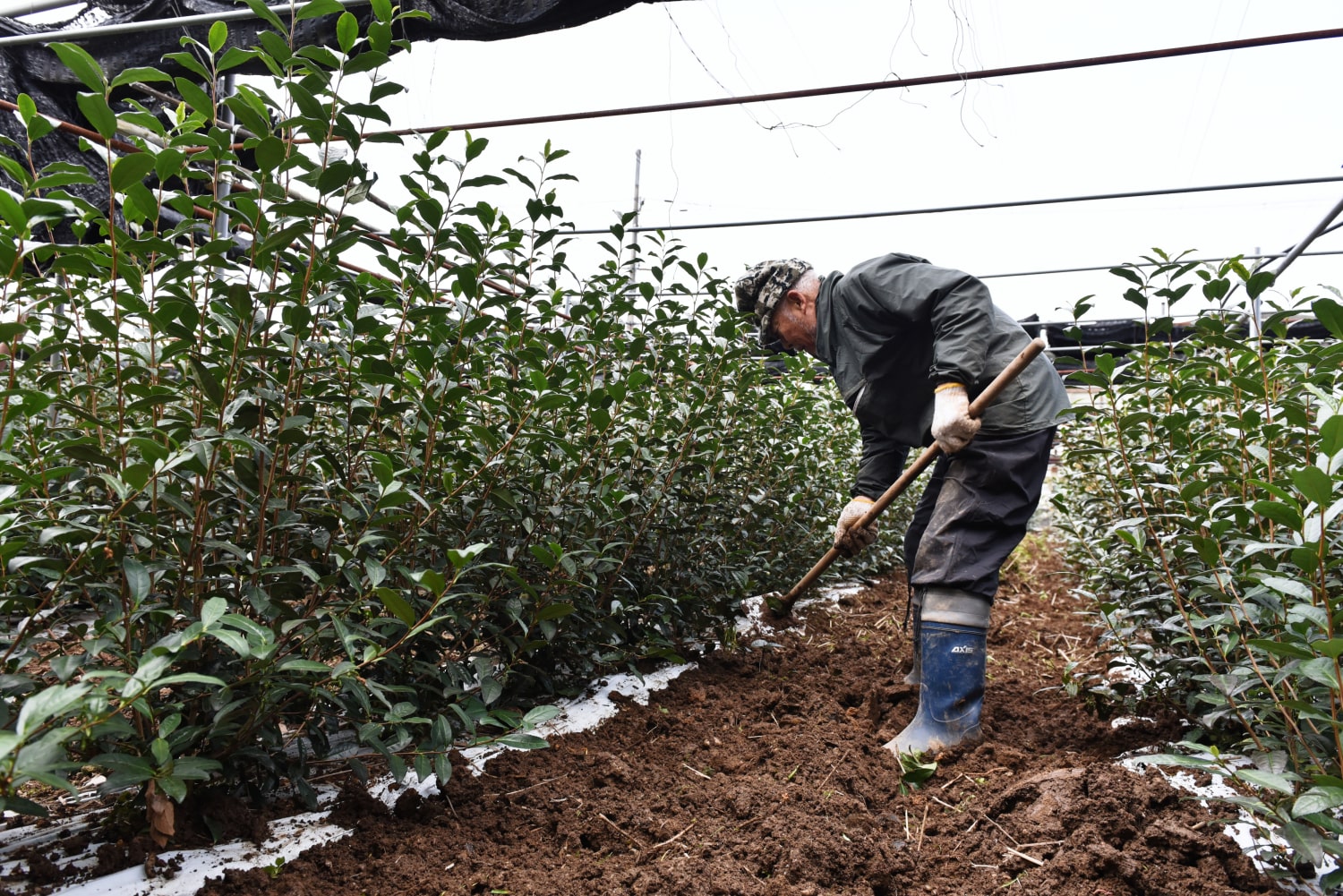

“Okunoyama” tea garden has continued till this day since the Muromachi Period (1336-1573). It is said that it is very important to keep the tea garden soil soft and fluffy. Tencha “Narino” is cultivated in such a tea garden.
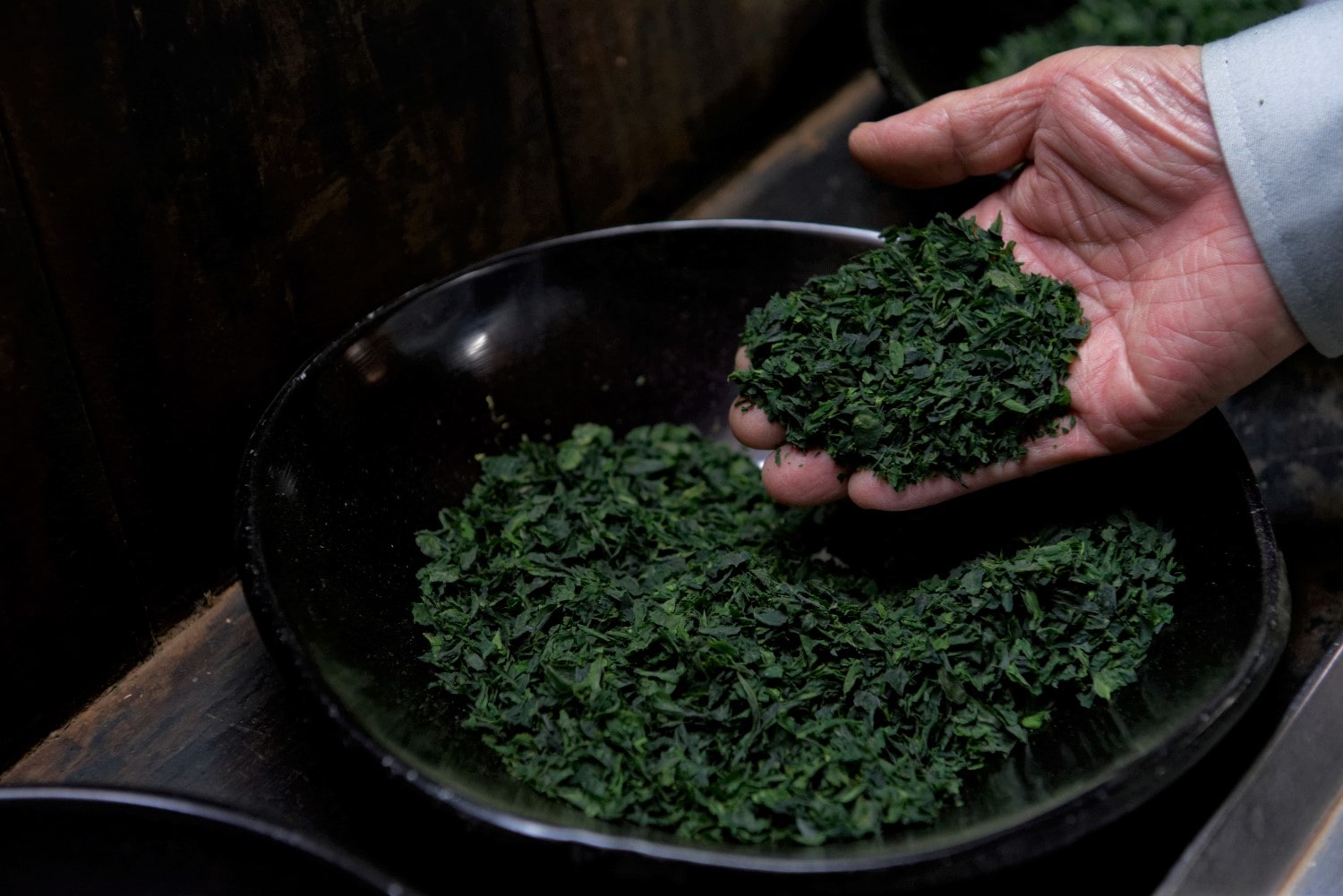

Mr. Horii specially showed us the process of inspecting tea. In order to observe the color, shape and color of tea, inspection is usually carried out in a place with sufficient natural light in the morning.
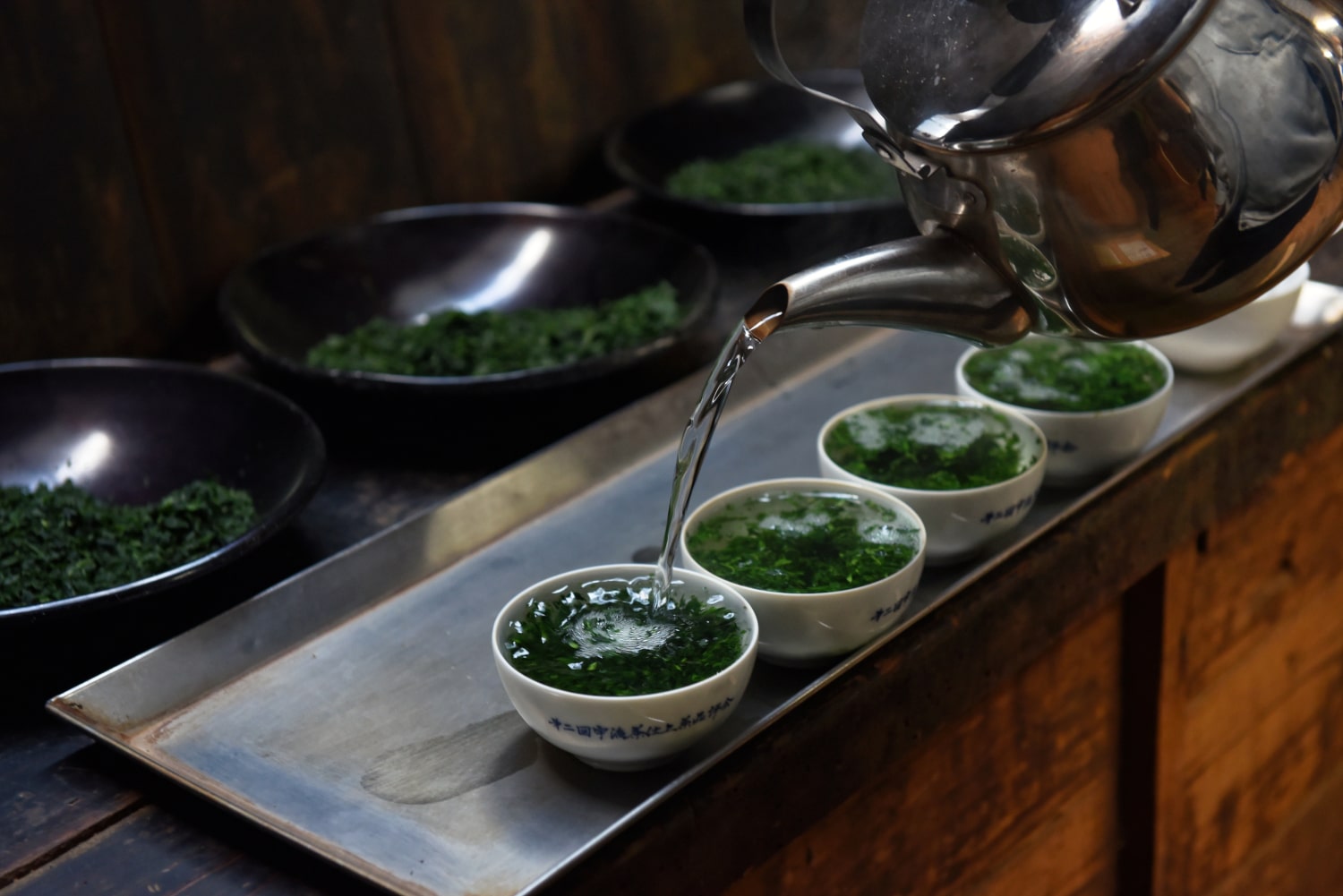

Put tea into different bowls, pour water in, and observe the color.
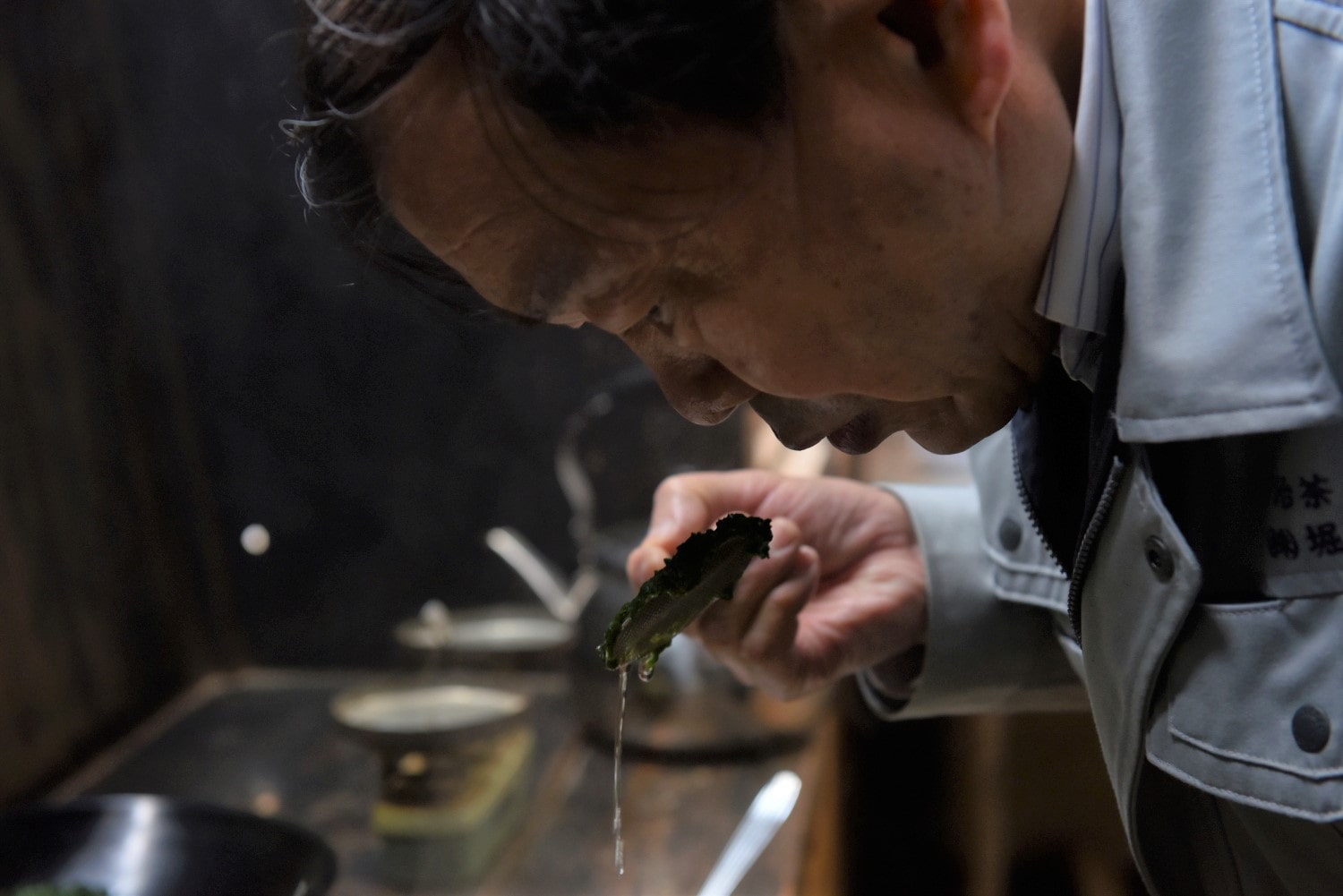

Pour boiling water into the tea bowls, and then scoop out the tea. Mr. Horii is making sure whether the color, aroma and taste of tea are right to standard. All the tea in Horii shichimeien is checked by Mr. Horii himself. “This is the job and responsibility of the owner,” he said.
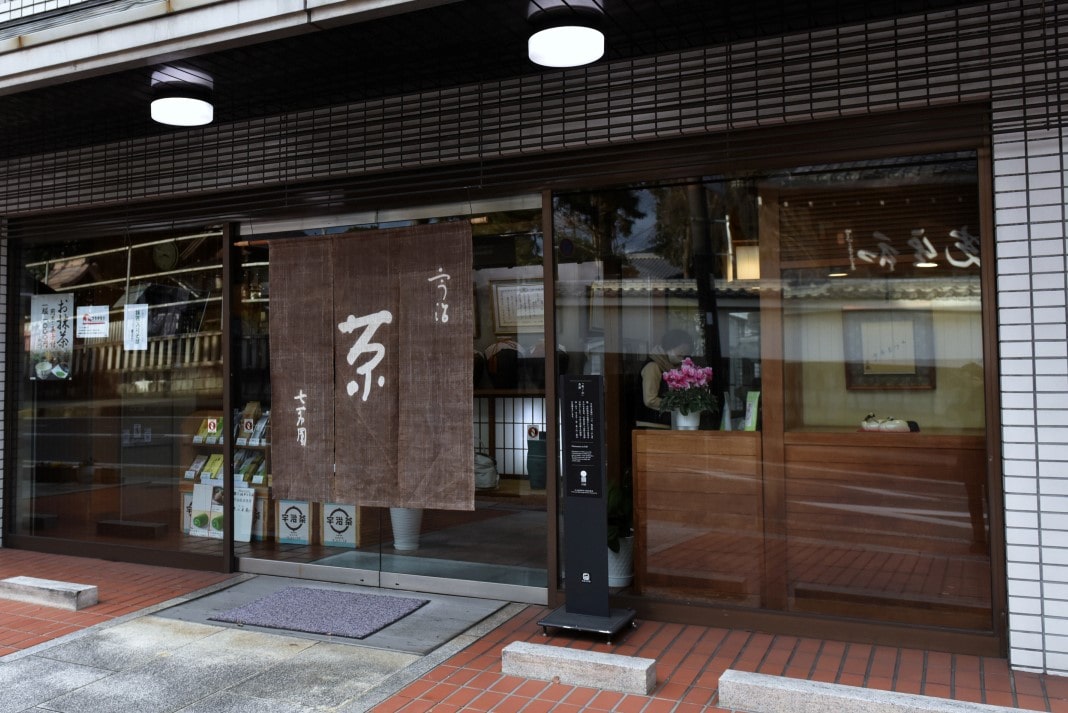

Horiishichimeien
84, Uji Myoraku, Uji-city, Kyoto Prefecture
Tel:(0774)23-1118
Business Hours: 8:30-17:30
Irregular holidays
※ For 3300 yen per person, you can experience the special guide of Okunoyama tea garden and taste matcha “Narino”. For details, please call in advance.
Teaparing, Special Offer from Tea Production Areas
Ristorante NAKAMOTO
“Ristorante NAKAMOTO”, located near JR Kizugawa station, is a very popular Italian restaurant. Without doubt many fans will come here to dine from miles away. As it serves authentic tea dishes unique to tea production areas, it is a restaurant that you are longing to go.
Nowadays, many restaurants have teaparing, but perhaps in most cases, these restaurants will simply serve guests with dishes and the pre-made bottled tea by famous tea masters to match the dishes. However, in here, chef Nakamoto will personally choose and match tea according to the type of cuisine. He will also learn how to brew tea to better the taste of dishes.
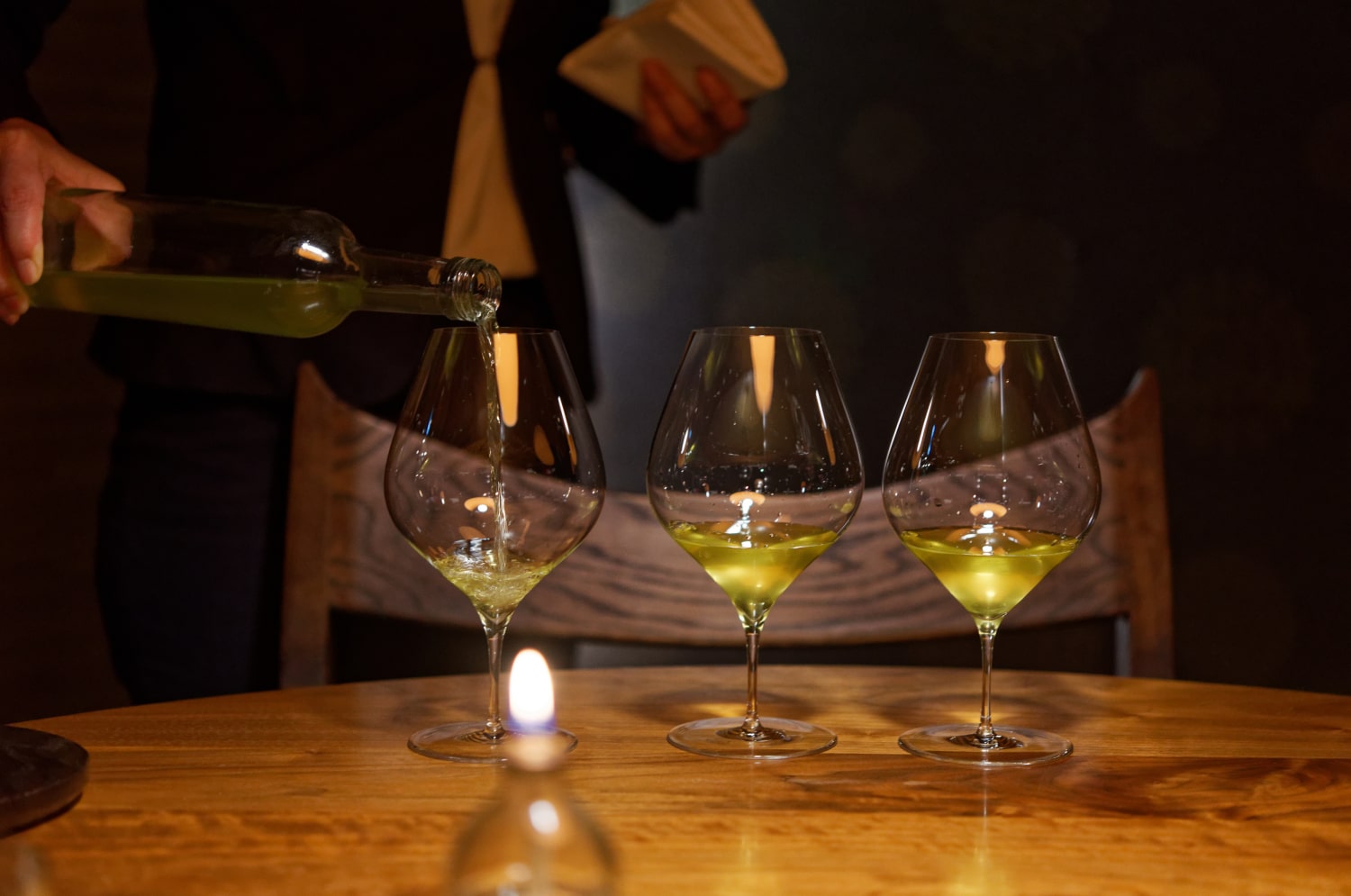

Hold your breath and concentrate on the moment when tea is poured into the wine glass.
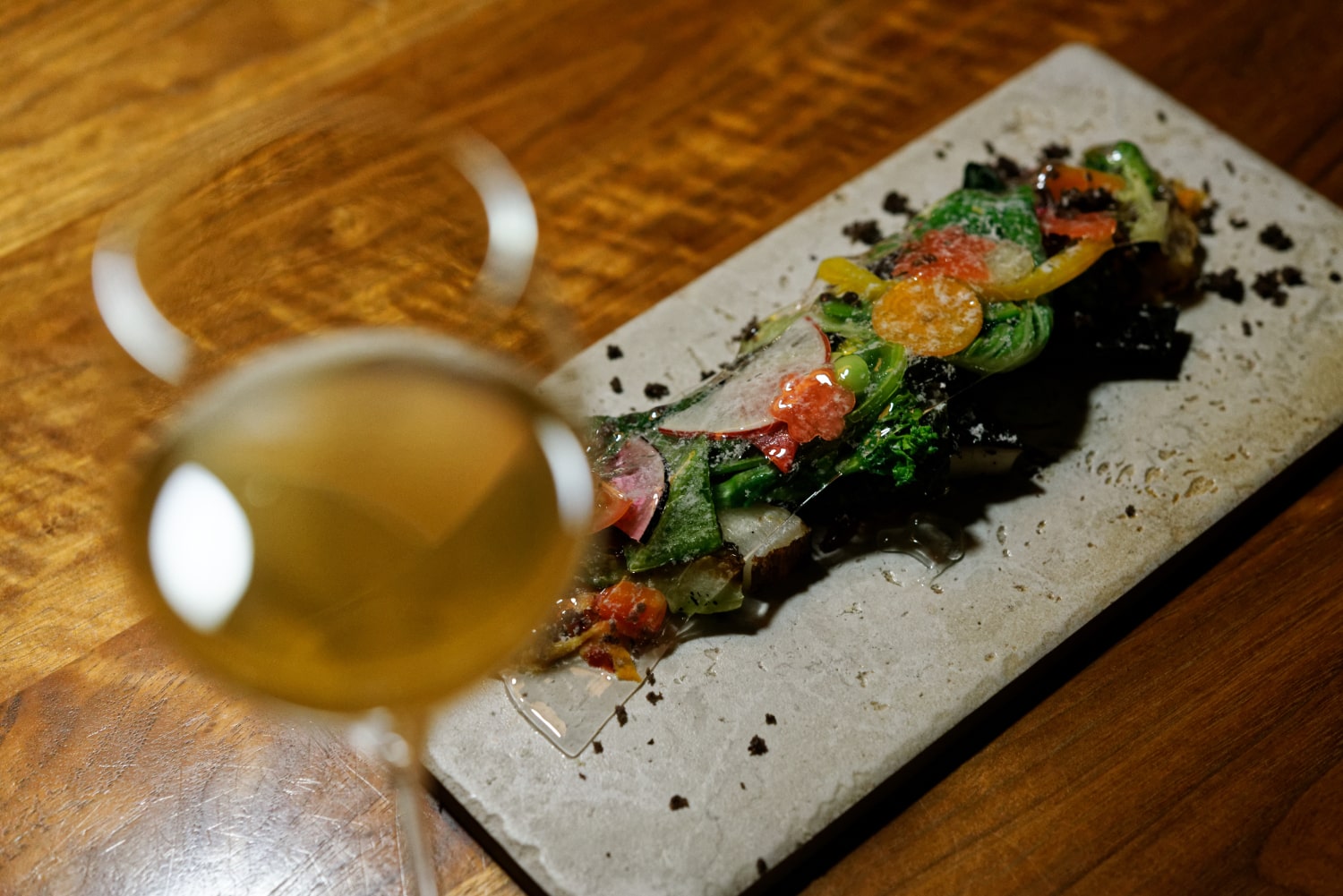

Salad “Seasonal Vegetable Platter” allows people to enjoy the mellow land. In this dish, there are about 30 kinds of vegetables from Kizugawa, supplemented by cold brewing tencha. We can enjoy salad and tea full of Kizugawa flavor.
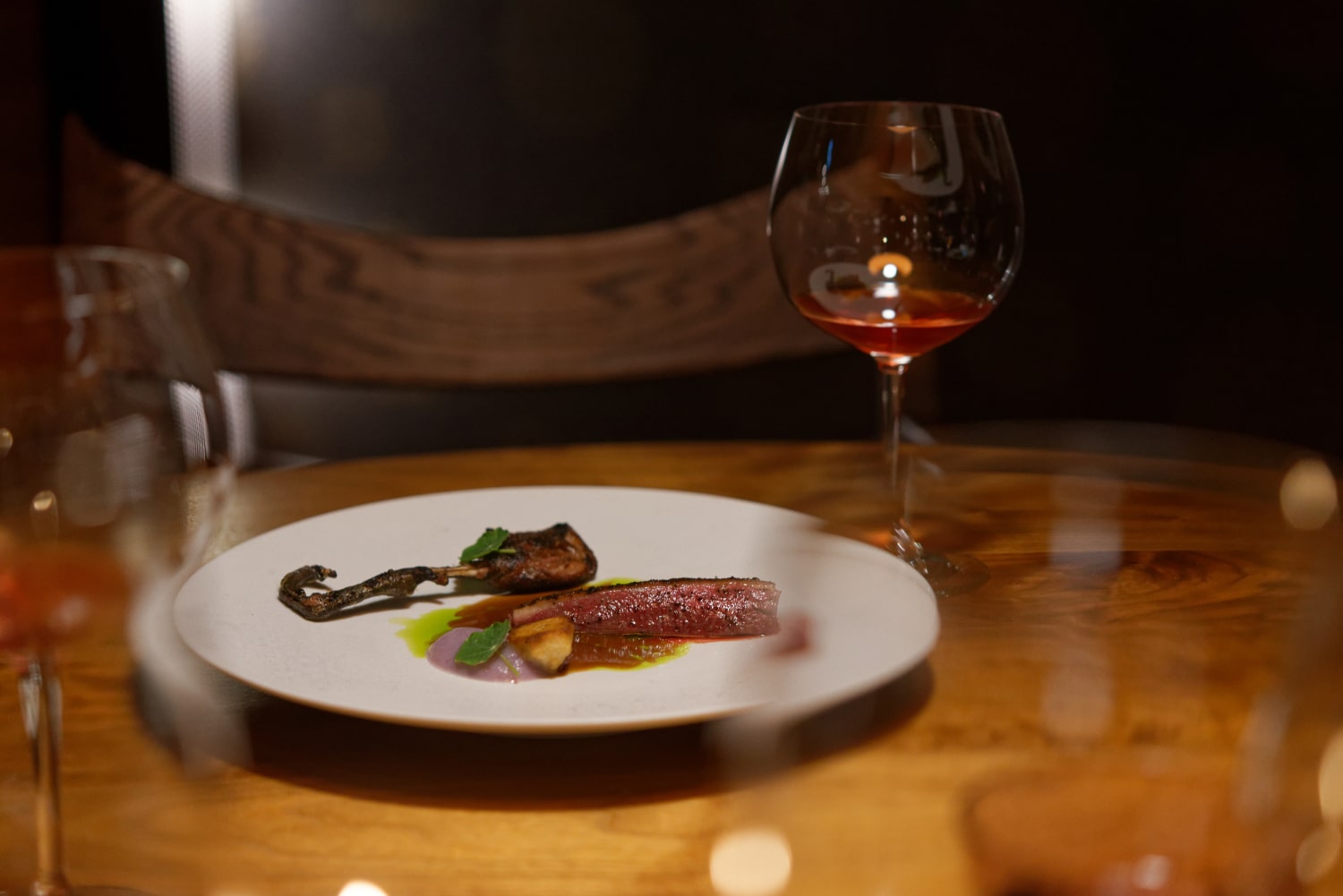

“Kagoshima Long-tailed Duck” is seasoned with baked tea.
The restaurant will choose tea according to the combination of cuisine and seasoning. Dishes seasoned with spices like cardamom and vanilla beans and those added fruits like cranberries and tropical fruits are all matched with tea in a variety of types, colors, tastes, and categories. What an eye-dropping feast.
“We produce tea here. This is one of the reasons why I want to make teaparing. People I know who are engaged in tea production are trustworthy. They introduce me to different tea and many tea merchants. Thus, I just keep trying.”
Tencha, awabancha, kabusecha, matcha, baked tea, Japanese black tea and so on. The chef tries to match them with spices or fruits and change the cold brewing time and so on. This kind of freedom and imagination creates “tea for NAKAMOTO dishes”. Sometimes he succeeds, sometimes he fails. However, the whole process reflects the devotion of chef Nakamoto, and the dishes are his jewels.
From aperitif to dolce, from the first dish to the last; all are paired with tea poured into glasses. “Restorante NAKAMOTO” brings you joy that really cheers you up.
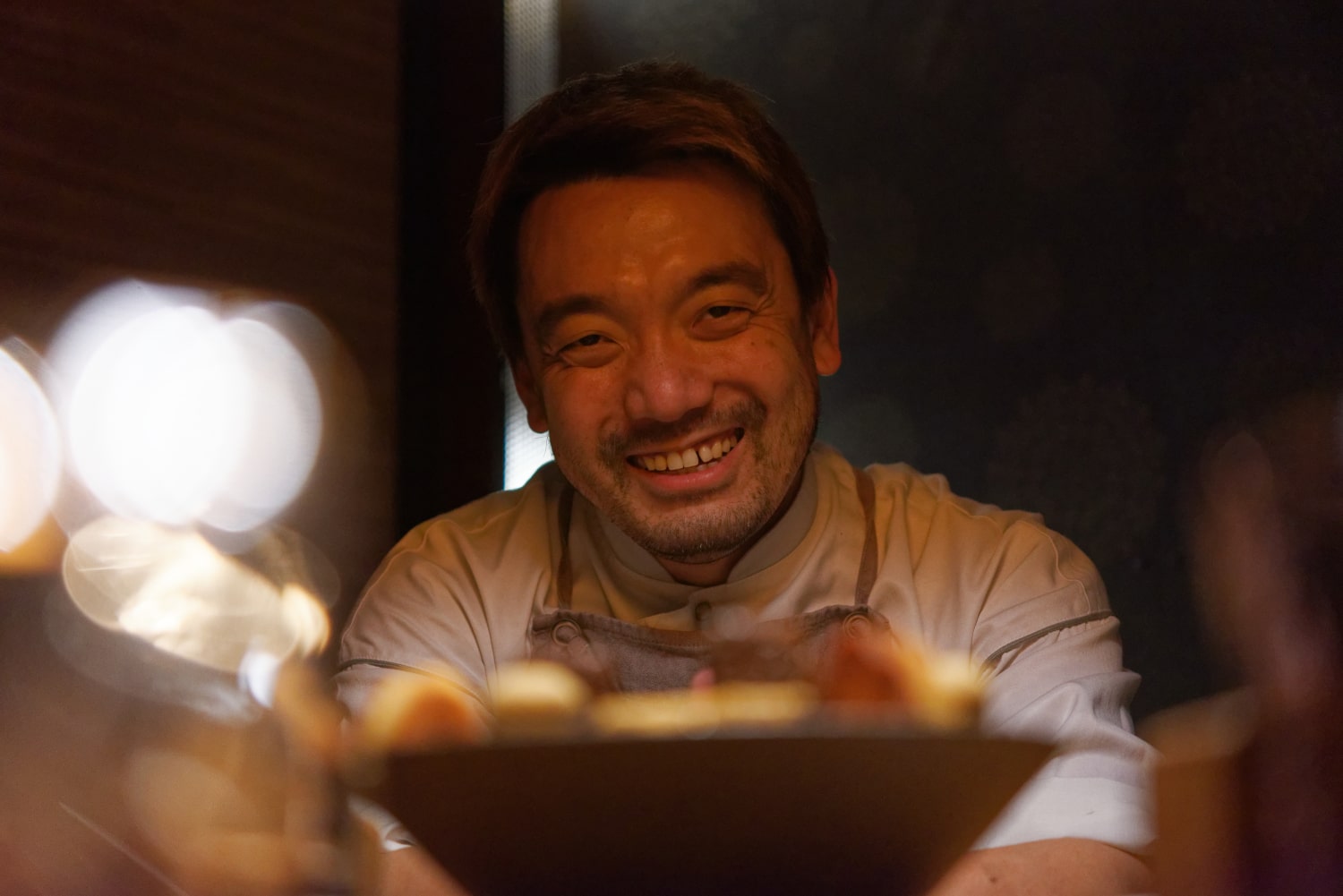

Chef Akihiro Nakamoto once worked in the Italian restaurant ENOTECA PINCHIORRI in Florence. After accumulating working experience in New York and Tokyo, in 2011 he opened this “Restorante NAKAMOTO” in his birthplace Kizugawa, Kyoto. “Tea has life. Soaking time, temperature, serving time and so on are closely related to the freshness of dishes, so I keep learning every day,” he said.
Ristorante NAKAMOTO
122-1 Kizuminamigaito, Kizugawa, Kyoto Prefecture
Tel: 050‐3134₋3550
Full lunch set is 12000 yen / full dinner set is 20350 yen. (Prices are tax inclusive and service fees will be paid separately.)
All have drinks.
With beautiful tea fields, a long history of tea production, tea aroma and exquisite cuisine; the journey to Kyoto, the capital of tea, is full of surprises. Do you also want a short trip to deeply explore Kyoto, which cannot be felt by sightseeing in downtown? Should you need its tourist guide or transportation information, we recommend you to visit the website of ANOTHER KYOTO.
